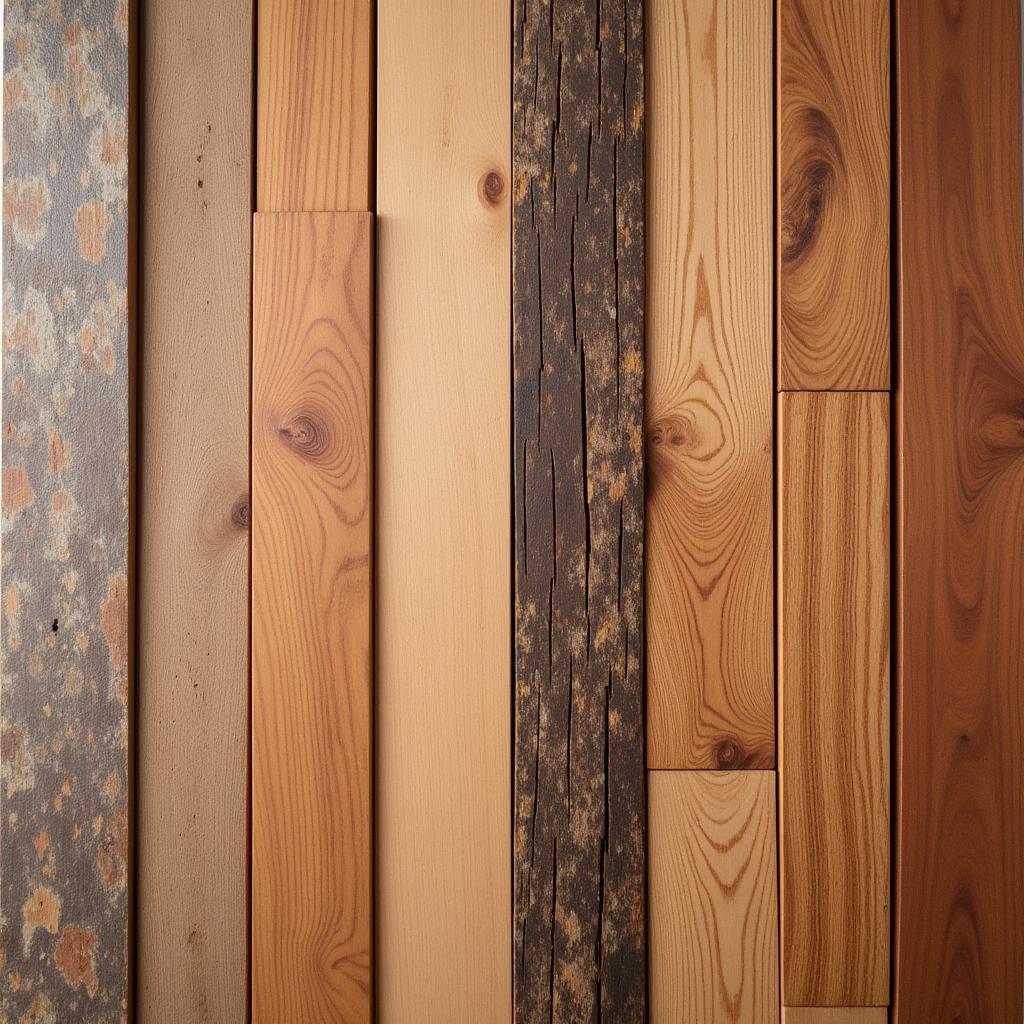Plank Food – the mere mention of it conjures images of rustic elegance and mouthwatering aromas. This unique cooking technique, involving grilling food on a wooden plank, is more than just a novelty; it’s a gateway to unlocking incredible depths of flavor and creating a truly memorable dining experience.
The Allure of Plank Cooking: Why You Should Try It
Plank cooking, often associated with seafood like salmon, is surprisingly versatile. From succulent steaks and tender chicken to vibrant vegetables and even decadent desserts, the possibilities are endless. So, what makes this method so special?
- Unmatched Smoky Flavor: As the plank heats up, it releases natural wood sugars and oils, infusing your food with a subtle yet distinctive smoky flavor that’s simply unattainable through conventional grilling.
- Enhanced Moisture and Tenderness: The plank acts as a natural heat diffuser, preventing direct contact between the food and the grill grates. This gentle cooking process ensures your food stays incredibly moist and tender, even when cooked to perfection.
- Visually Stunning Presentation: Let’s face it, presentation matters. Serving your culinary masterpiece on a beautifully charred plank adds a touch of rustic charm and visual appeal that’s sure to impress your guests.
Choosing the Right Plank for Your Culinary Adventure
The type of wood you choose for plank cooking plays a crucial role in the final flavor profile of your dish. While cedar planks remain a popular choice, especially for seafood, don’t be afraid to experiment with other hardwoods like maple, alder, or hickory for unique flavor combinations.
- Cedar: Renowned for its strong, aromatic properties, cedar imparts a slightly sweet, almost citrusy flavor to food. It pairs exceptionally well with salmon, other fatty fish, and even vegetables like asparagus and zucchini.
- Maple: Known for its subtle sweetness, maple planks lend a delicate, caramelized flavor to poultry, pork, and even fruits like grilled peaches or pineapple.
- Alder: With its mild, slightly sweet flavor, alder wood is incredibly versatile and complements a wide range of ingredients, from seafood and poultry to vegetables and tofu.
 Assortment of wood planks for grilling
Assortment of wood planks for grilling
Mastering the Art of Plank Cooking: Tips and Tricks
Plank cooking might seem intimidating at first, but with a few simple tips, you’ll be well on your way to creating culinary masterpieces in your own backyard.
- Soak It Up: Before you fire up the grill, ensure your wooden plank is adequately soaked. Submerge it in water for at least 30 minutes, or even better, overnight, to prevent it from burning on the grill.
- Preheat for Optimal Results: Just like you would with any grilling method, preheating your grill is essential for even cooking. Aim for medium heat to ensure the plank slowly releases its flavors and cooks your food gently.
- Oil It Up: Lightly oiling the surface of the plank not only prevents sticking but also creates a beautiful caramelized crust on your food. Choose an oil with a high smoke point, like grapeseed or avocado oil.
- Don’t Be Afraid to Flip: While you won’t be flipping the plank itself, don’t hesitate to turn your food halfway through cooking to ensure even grilling and a picture-perfect sear.
- Embrace the Char: A little char is a good thing! It adds to the visual appeal and imparts those desirable smoky notes. However, keep a close eye on the plank to prevent it from catching fire.
Plank Food Inspiration: From Simple to Spectacular
Ready to embark on your plank cooking adventure? Here are a few recipe ideas to ignite your culinary imagination:
- Classic Cedar Plank Salmon: You can’t go wrong with this timeless favorite. Simply season your salmon fillet with salt, pepper, and your favorite herbs, place it on a soaked cedar plank, and grill to perfection.
- Honey-Glazed Plank Chicken: Elevate your poultry game with this flavorful dish. Marinate chicken breasts in a honey-soy mixture, then grill them on a maple plank for a subtly sweet and smoky flavor.
- Grilled Plank Vegetables: Plank cooking isn’t limited to proteins. Toss your favorite seasonal vegetables with olive oil, herbs, and spices, then grill them on an alder plank for a healthy and delicious side dish.
Conclusion
Plank cooking is more than just a method; it’s an experience. It’s about connecting with the natural flavors of wood and fire, about creating dishes that are as visually stunning as they are delicious. So, fire up the grill, grab a plank, and embark on a culinary adventure that will tantalize your taste buds and impress your guests.
FAQ
Do I need to season a new plank?
No, seasoning a new plank is not necessary. In fact, soaking the plank in water before use negates any potential benefits of seasoning.
Can I reuse a plank?
While it’s technically possible to reuse a plank once or twice, it’s generally not recommended due to sanitation concerns and the potential for flavor transfer.
What happens if my plank catches fire?
If your plank catches fire, carefully remove it from the grill using tongs and extinguish the flames with water. It’s essential to soak the plank adequately beforehand to minimize the risk of fire.
Can I use plank cooking on a gas grill?
Absolutely! Plank cooking works wonderfully on both gas and charcoal grills. The key is to maintain a consistent medium heat for optimal results.
Where can I buy wood planks for cooking?
You can find wood planks for cooking at most grocery stores, kitchen supply stores, and online retailers. Look for planks specifically designed for grilling to ensure food safety.
Need help with your plank food journey? Reach out to our team at Mina Cones Food. Call us at 02437655121, email us at [email protected], or visit us at 3PGH+8R9, ĐT70A, thôn Trung, Bắc Từ Liêm, Hà Nội, Việt Nam. We have a dedicated customer support team available 24/7 to assist you.